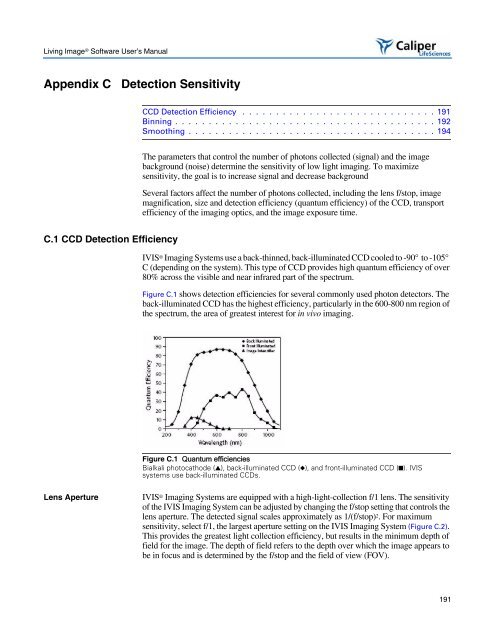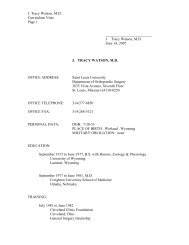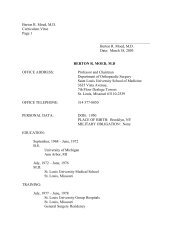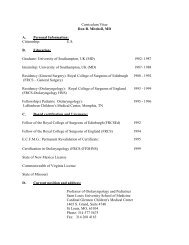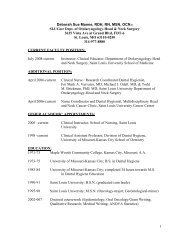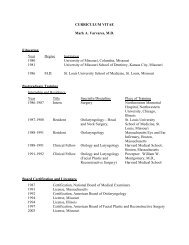Living Image 3.1
Living Image 3.1
Living Image 3.1
You also want an ePaper? Increase the reach of your titles
YUMPU automatically turns print PDFs into web optimized ePapers that Google loves.
<strong>Living</strong> <strong>Image</strong> ® Software User’s Manual<br />
Appendix C Detection Sensitivity<br />
C.1 CCD Detection Efficiency<br />
CCD Detection Efficiency . . . . . . . . . . . . . . . . . . . . . . . . . . . . . 191<br />
Binning . . . . . . . . . . . . . . . . . . . . . . . . . . . . . . . . . . . . . . . 192<br />
Smoothing . . . . . . . . . . . . . . . . . . . . . . . . . . . . . . . . . . . . . 194<br />
The parameters that control the number of photons collected (signal) and the image<br />
background (noise) determine the sensitivity of low light imaging. To maximize<br />
sensitivity, the goal is to increase signal and decrease background<br />
Several factors affect the number of photons collected, including the lens f/stop, image<br />
magnification, size and detection efficiency (quantum efficiency) of the CCD, transport<br />
efficiency of the imaging optics, and the image exposure time.<br />
IVIS ® Imaging Systems use a back-thinned, back-illuminated CCD cooled to -90° to -105°<br />
C (depending on the system). This type of CCD provides high quantum efficiency of over<br />
80% across the visible and near infrared part of the spectrum.<br />
Figure C.1 shows detection efficiencies for several commonly used photon detectors. The<br />
back-illuminated CCD has the highest efficiency, particularly in the 600-800 nm region of<br />
the spectrum, the area of greatest interest for in vivo imaging.<br />
Figure C.1 Quantum efficiencies<br />
Bialkali photocathode (▲), back-illuminated CCD (◆), and front-illuminated CCD (■). IVIS<br />
systems use back-illuminated CCDs.<br />
Lens Aperture IVIS ® Imaging Systems are equipped with a high-light-collection f/1 lens. The sensitivity<br />
of the IVIS Imaging System can be adjusted by changing the f/stop setting that controls the<br />
lens aperture. The detected signal scales approximately as 1/(f/stop) 2. For maximum<br />
sensitivity, select f/1, the largest aperture setting on the IVIS Imaging System (Figure C.2).<br />
This provides the greatest light collection efficiency, but results in the minimum depth of<br />
field for the image. The depth of field refers to the depth over which the image appears to<br />
be in focus and is determined by the f/stop and the field of view (FOV).<br />
191


